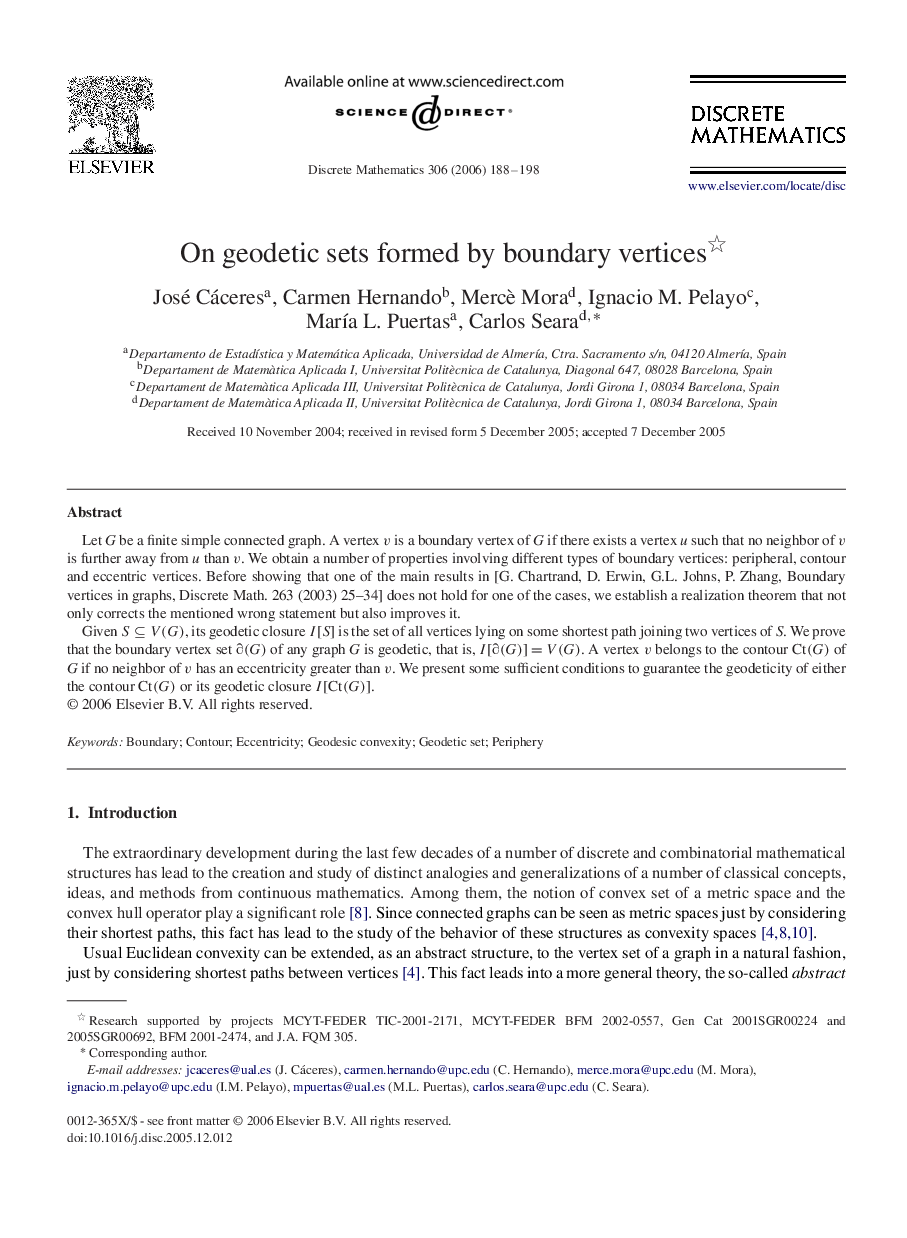| Article ID | Journal | Published Year | Pages | File Type |
|---|---|---|---|---|
| 4651484 | Discrete Mathematics | 2006 | 11 Pages |
Let G be a finite simple connected graph. A vertex vv is a boundary vertex of G if there exists a vertex u such that no neighbor of vv is further away from u than vv. We obtain a number of properties involving different types of boundary vertices: peripheral, contour and eccentric vertices. Before showing that one of the main results in [G. Chartrand, D. Erwin, G.L. Johns, P. Zhang, Boundary vertices in graphs, Discrete Math. 263 (2003) 25–34] does not hold for one of the cases, we establish a realization theorem that not only corrects the mentioned wrong statement but also improves it.Given S⊆V(G)S⊆V(G), its geodetic closure I[S]I[S] is the set of all vertices lying on some shortest path joining two vertices of S . We prove that the boundary vertex set ∂(G)∂(G) of any graph G is geodetic, that is, I[∂(G)]=V(G)I[∂(G)]=V(G). A vertex vv belongs to the contour Ct(G)Ct(G) of G if no neighbor of vv has an eccentricity greater than vv. We present some sufficient conditions to guarantee the geodeticity of either the contour Ct(G)Ct(G) or its geodetic closure I[Ct(G)]I[Ct(G)].
